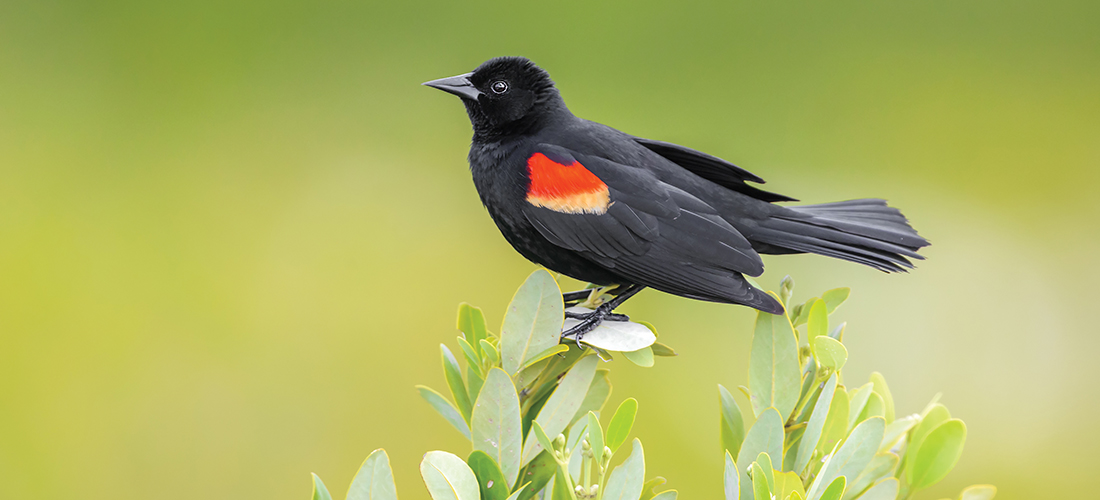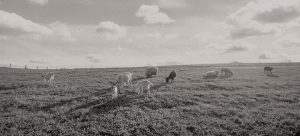
“Konk-a-ree!”
The call of the red-winged
blackbird heralds spring
By Susan Campbell
The sound of spring, for some, is the song of the American robin, our melodious and most familiar songster. But for me it has always been the call of the red-winged blackbird. When I first started watching birds in New York State, migration began a lot later than here in North Carolina. And some of the first returnees riding the warmer winds back north are red-wingeds. The distant “chucking” coming from the ribbons of birds passing overhead was the very first sign that winter was losing its grip. Not long after, I would be greeted by the first males giving their loud “konk-a-ree!” songs from the tallest of the cattails in the nearby marsh.
Red-wingeds get their name, of course, from the bright red epaulets on the wings of the adult males. These patches are actually set off on the black wing by a patch of yellow feathers just below. Otherwise, the birds are completely dark. Females, not surprisingly, are quite drab. Their brownish, streaky appearance is superb camouflage against the tall grasses in the wet habitat that they tend to inhabit. Young birds are also entirely streaked, which makes them harder to spot as they learn their way around the world, well into their first winter.
These blackbirds can be found inland in our state year round. However, in the winter months, they gather in large flocks so they are not widespread. Aggregations of thousands of birds can be found closer to the coast from late fall into early spring. But by March, they are returning to localized bottomlands, lakes and ponds to breed. Red-wingeds are unusual in that they are polygymous. Males may have a harem of mates within the territory that they defend. Experienced males will pair with two or more females as early as mid-March. Females will create substantial nests in low vegetation by weaving wet leaves and shoots together to form a dense cup. They will add mud to the inside and then finally line it with fine grasses before laying two to four pale eggs with dark streaks.
Although blackbirds are generally known to feed on seeds, of both native and agricultural origins, in the summer they hunt mainly insects. They are known to probe at the base of aquatic plants with their slender bills and are very capable of prying insects from the stems. Young red-wingeds, like so many species, require lots of protein. It is the mother birds that forage for the family. Males spend most of their time defending their territories from high perches, singing throughout the day and fiercely chasing interlopers that venture too close.
As abundant as these birds may seem to be, their numbers have been declining for several decades. It is likely due to the continuing loss of wetland habitat throughout their range. Additionally, terrestrial predators are on the rise in areas where they breed — including cats. If you have red-wingeds in your neighborhood this spring, consider yourself lucky and be sure to get out and enjoy their antics as well as that unmistakable song! OH
Susan would love to receive your wildlife sightings and photos at susan@ncaves.com.




